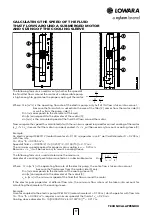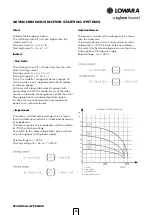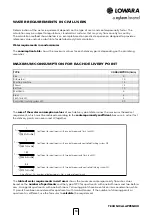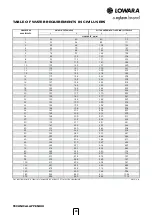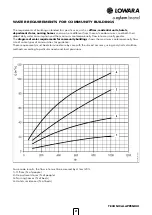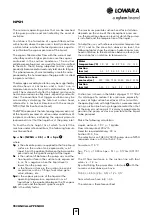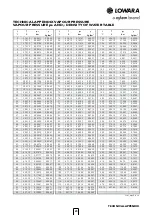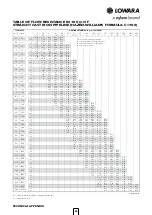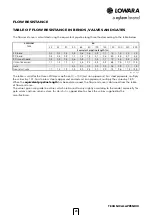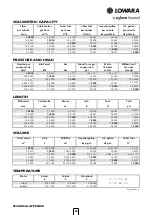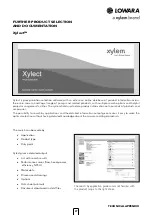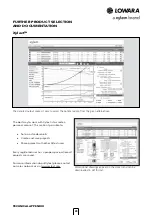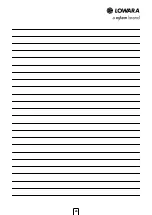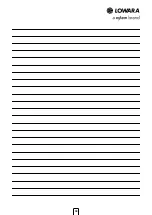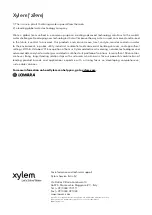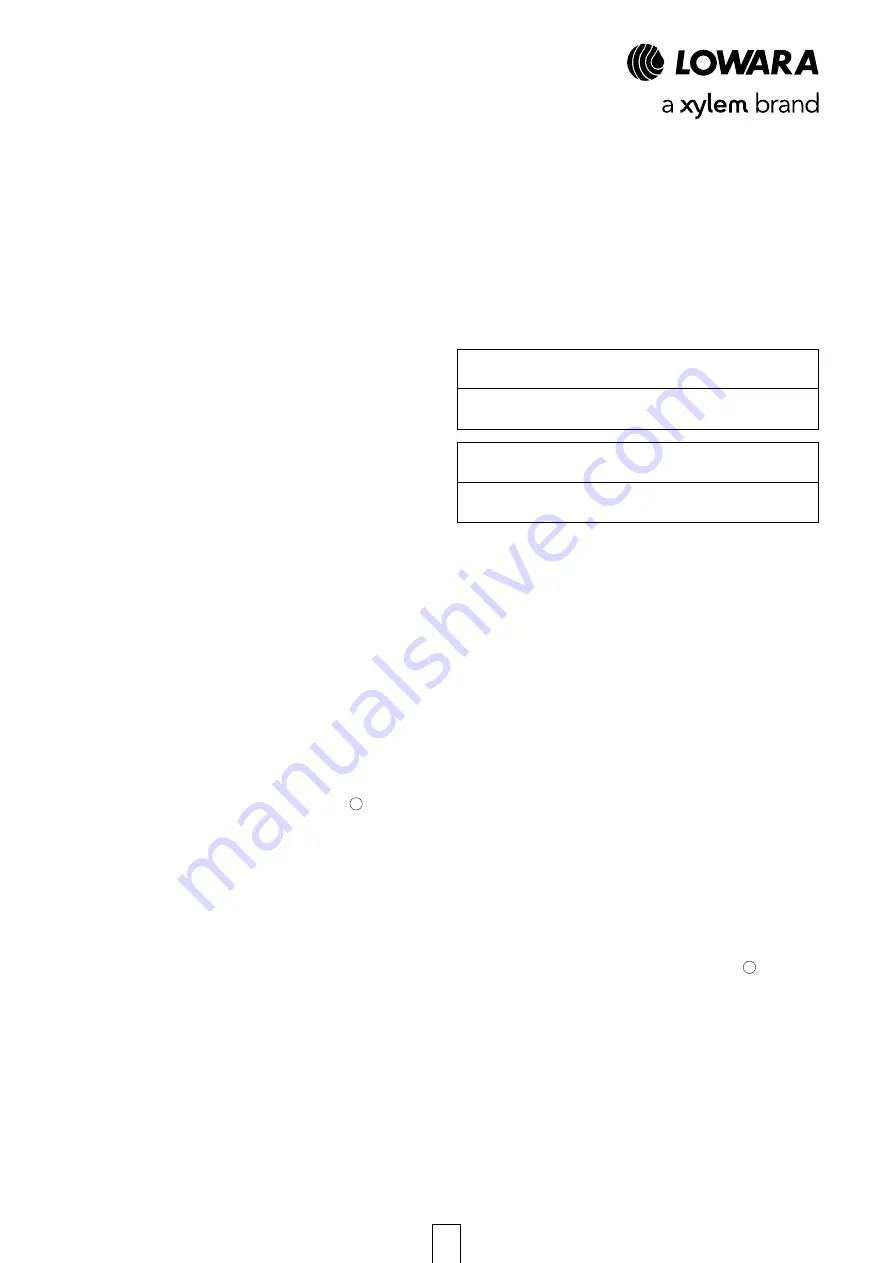
22
TECHNICAL APPENDIX
The minimum operating values that can be reached
at the pump suction end are limited by the onset of
cavitation.
Cavitation is the formation of vapour-filled cavities
within liquids where the pressure is locally reduced to
a critical value, or where the local pressure is equal to,
or just below the vapour pressure of the liquid.
The vapour-filled cavities flow with the current and
when they reach a higher pressure area the vapour
contained in the cavities condenses. The cavities
collide, generating pressure waves that are transmitted
to the walls. These, being subjected to stress cycles,
gradually become deformed and yield due to fatigue.
This phenomenon, characterized by a metallic noise
produced by the hammering on the pipe walls, is called
incipient cavitation.
The damage caused by cavitation may be magnified by
electrochemical corrosion and a local rise in
temperature due to the plastic deformation of the
walls. The materials that offer the highest resistance to
heat and corrosion are alloy steels, especially austenitic
steel. The conditions that trigger cavitation may be
assessed by calculating the total net suction head,
referred to in technical literature with the acronym
NPSH (Net Positive Suction Head).
The NPSH represents the total energy (expressed in m.)
of the liquid measured at suction under conditions of
incipient cavitation, excluding the vapour pressure
(expressed in m.) that the liquid has at the pump inlet.
To find the static height hz at which to install the
machine under safe conditions, the following formula
must be verified:
hp
+
hz
≥
(NPSHr + 0.5) + hf + hpv
where:
hp
is the absolute pressure applied to the free liquid
surface in the suction tank, expressed in m. of
liquid; hp is the quotient between the barometric
pressure and the specific weight of the liquid.
hz
is the suction lift between the pump axis and the
free liquid surface in the suction tank, expressed
in m.; hz is negative when the liquid level is
lower than the pump axis.
hf
is the flow resistance in the suction line and its
accessories, such as: fittings, foot valve, gate
valve, elbows, etc.
hpv
is the vapour pressure of the liquid at the
operating temperature, expressed in m. of
liquid. hpv is the quotient between the Pv vapour
pressure and the liquid’s specific weight.
0,5
is the safety factor.
The maximum possible suction head for installation
depends on the value of the atmospheric pressure
(i.e. the elevation above sea level at which the pump
is installed) and the temperature of the liquid.
To help the user, with reference to water temperature
(4° C) and to the elevation above sea level, the
following tables show the drop in hydraulic pressure
head in relation to the elevation above sea level, and
the suction loss in relation to temperature.
Friction loss is shown in the tables at pages 117-118 of
this catalogue. To reduce it to a minimum, especially
in cases of high suction head (over 4-5 m.) or within
the operating limits with high flow rates, we recommend
using a suction line having a larger diameter than that
of the pump’s suction port. It is always a good idea to
position the pump as close as possible to the liquid
to be pumped.
Make the following calculation:
Liquid: water at ~15°C
γ
= 1 kg/dm
3
Flow rate required: 30 m
3
/h
Head for required delivery: 43 m.
Suction lift: 3,5 m.
The selection is an FHE 40-200/75 pump whose NPSH
required value is, at 30 m
3
/h, di 2,5 m.
For water at 15 °C
hp = Pa /
γ
= 10,33m, hpv = Pv /
γ
= 0,174m (0,01701
bar)
The Hf flow resistance in the suction line with foot
valves is ~ 1,2 m.
By substituting the parameters in formula with the
numeric values above, we have:
10,33 + (-3,5) ≥ (2,5 + 0,5) + 1,2 + 0,17
from which we have: 6,8 > 4,4
The relation is therefore verified.
Water
temperature (°C)
20 40 60 80 90 110 120
Suction
loss (m)
0,2 0,7 2,0 5,0 7,4 15,4 21,5
Elevation above
sea level (m)
500 1000 1500 2000 2500 3000
Suction
loss (m)
0,55 1,1 1,65 2,2 2,75 3,3
NPSH
1
1
Summary of Contents for Lowara Scuba SC205C
Page 1: ...Cod 191005661 Rev A Ed 06 2017 50 Hz SCUBA Series CLOSE COUPLED SUBMERSIBLE ELECTRIC PUMPS ...
Page 2: ......
Page 13: ...13 TECHNICAL APPENDIX ...
Page 29: ...29 ...
Page 30: ...30 ...
Page 31: ......










